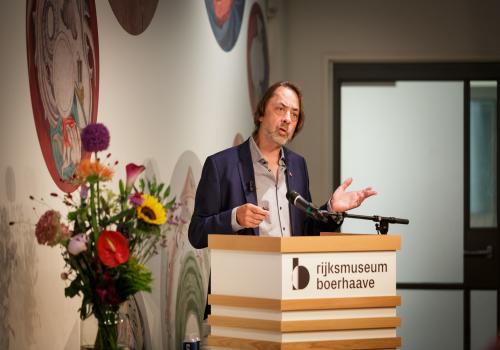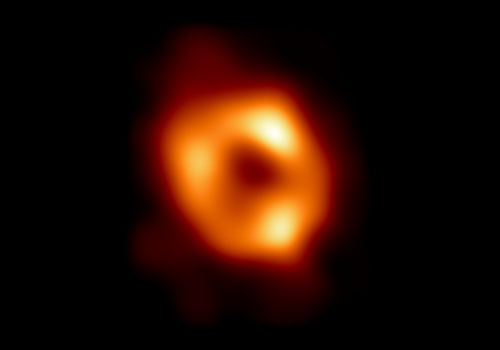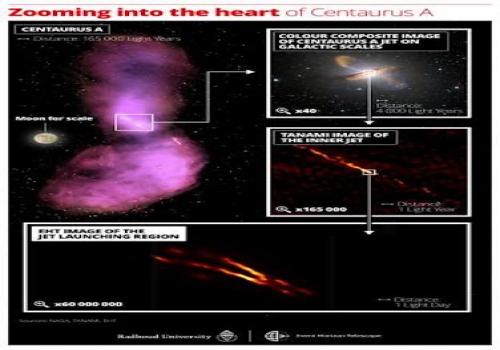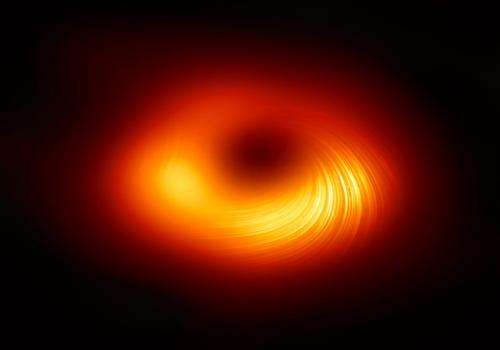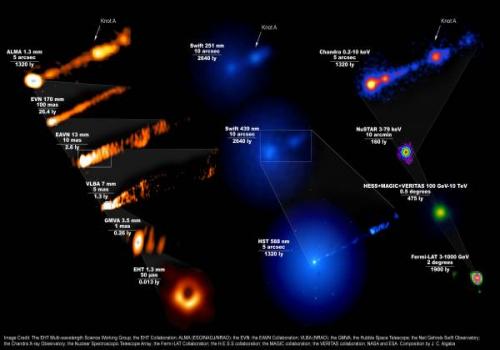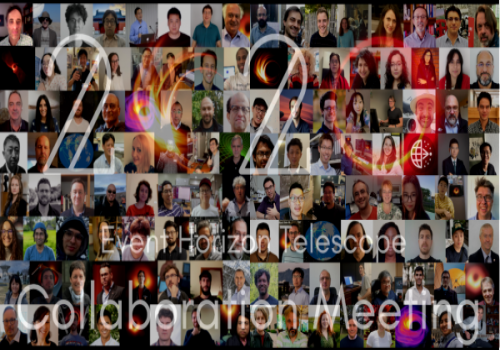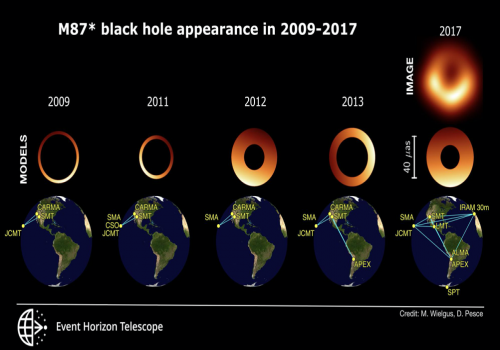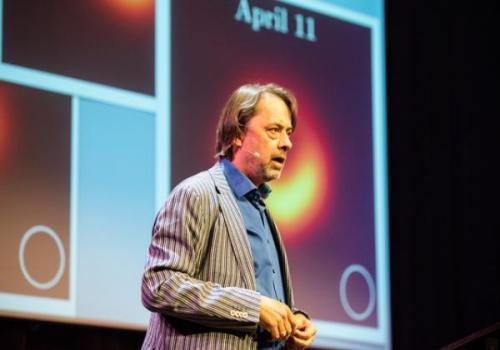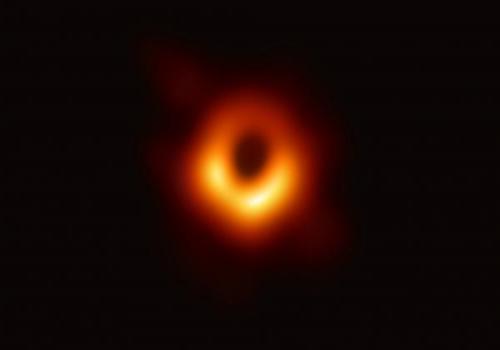Event Horizon Telescope (EHT)

The Event Horizon Telescope (EHT) is an international collaboration - including over 300 scientists from more than 20 countries - capturing images of black holes using a virtual Earth-sized telescope. In active galaxies where the central black hole is not resolved, the EHT enables studies of jets and jet formation mechanisms at the smallest physical scales. It utilises Very Long Baseline Interferometry (VLBI) at higher frequencies (100-350GHz) than the European VLBI Network, which operates in the 1-43 GHz regime.
The EHT has published the first two images of supermassive black holes. In april 2019 the billion solar mass black hole in the core of the nearby massive elliptical galaxy M87 was revealed (Pōwehi). In 2022 the centre of our own Galaxy was shown to harbour a million solar mass black hole, Sagittarius A*.
JIVE Participation
The work in JIVE focuses on the data management and calibration of EHT observations, including the development of new software components in the CASA package. The EHT data processing occurs in two pipelines for cross verification, one of which (rPicard) is based on CASA and the tools developed at JIVE.
Website
https://eventhorizontelescope.org
Contact

